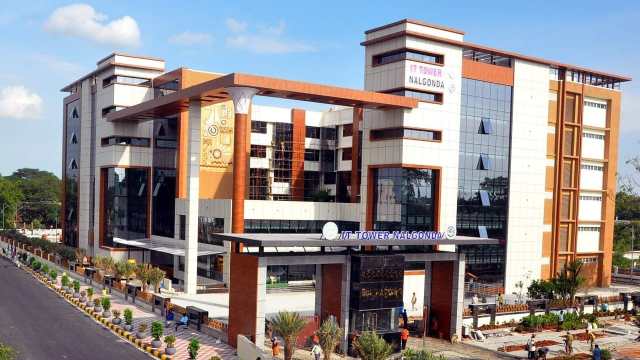History of Nalgonda
Home » History
🏛️ The Legacy of
Nalgonda
Nalgonda’s history is as rich and layered as the land it stands on. Once called Nilagiri during the Satavahana dynasty, the name later evolved to Nallagonda under the Bahmani rule — “Nalla” meaning black and “Konda” meaning hill, owing to the dark rocky terrain of the region. The British further anglicized it to Nalgonda, which it is known as today.
✨ A Timeline at a
Glance

2nd century BCE
Satavahana Dynasty
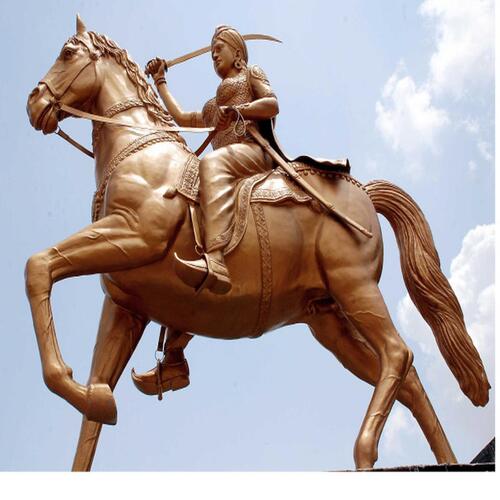
12th century
Kakatiya reign

14th century
Bahmani Sultanate
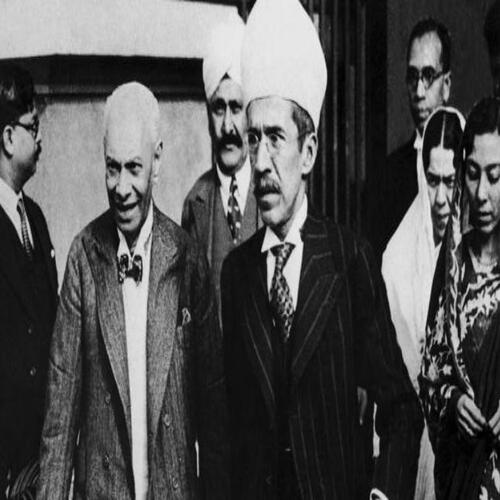
16th–18th century
Qutb Shahi & Nizam’s rule

1946–48
Telangana Rebellion
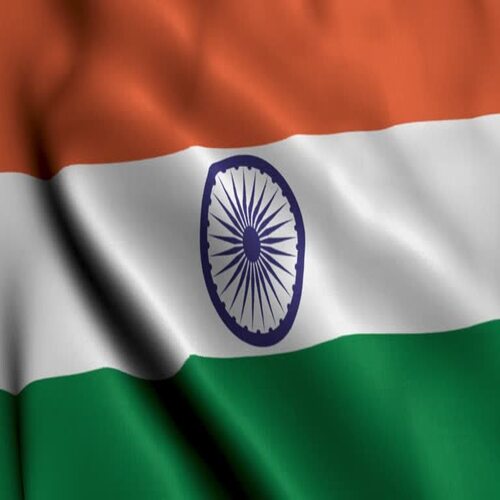
1948
Integration into Indian Union
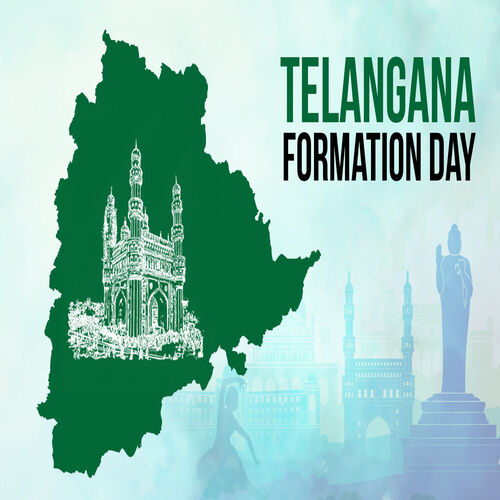
2014
Part of newly formed Telangana state
🕰️ History of
Nalgonda
Nalgonda’s story is one of dynasties, devotion, revolutions, and resilience. Its name itself reflects transformation — from Nilagiri (Blue Hill) to Nallagonda under Telugu influence, eventually becoming Nalgonda.
Archaeological discoveries show that Nalgonda was home to early Stone Age communities. Sites like Chandampet, Yeleswaram, and Gattupalli have yielded stone tools, burial urns, and cave dwellings, proving that humans lived here thousands of years ago.
Some of Telangana’s oldest human settlements were located in Nalgonda’s rocky terrains and valleys.
Between the 3rd century BCE and 3rd century CE, Nalgonda became a thriving hub of Buddhism under the Satavahanas and later the Ikshvakus. Nagarjuna Sagar (ancient Vijayapuri) was a seat of Buddhist learning and monastic life.
Ruins of Stupas, Viharas (monasteries), and sculptures were discovered at sites like Phanigiri, Chaitanyapuri, and Dhulikatta.
The great Buddhist philosopher Acharya Nagarjuna is believed to have lived and taught here.
Phanigiri is one of the most significant Buddhist archaeological sites in South India.
Between the 3rd century BCE and 3rd century CE, Nalgonda became a thriving hub of Buddhism under the Satavahanas and later the Ikshvakus. Nagarjuna Sagar (ancient Vijayapuri) was a seat of Buddhist learning and monastic life.
Ruins of Stupas, Viharas (monasteries), and sculptures were discovered at sites like Phanigiri, Chaitanyapuri, and Dhulikatta.
The great Buddhist philosopher Acharya Nagarjuna is believed to have lived and taught here.
Phanigiri is one of the most significant Buddhist archaeological sites in South India.
From the 6th to 13th centuries, Nalgonda came under the rule of various South Indian dynasties:
The Western Chalukyas and Rashtrakutas contributed to early temple architecture.
The powerful Kakatiya dynasty fortified the region, built temples like Pillalamarri and Chaya Someswara, and encouraged Telugu literature and inscriptions.
The Kakatiya legacy shaped Nalgonda’s architecture, irrigation tanks, and Telugu cultural pride.
During India’s freedom struggle, Nalgonda played a pivotal role. It was a hotbed for Telangana peasants’ rebellion (1946–51) against the oppressive feudal system under the Nizam’s rule.
👉Revolutionary leaders like Suddala Hanumanthu and Chityala Ailamma emerged from this soil.
👉People rose up against bonded labor, high taxation, and land grabbing by landlords.
👉The armed struggle inspired songs, ballads, and movements across rural Telangana.
Nalgonda was not just a historical witness — it was a battlefield for justice.
After the police action in 1948, Hyderabad was annexed into the Indian Union, and Nalgonda became a part of Andhra Pradesh. In 2014, with the formation of Telangana, Nalgonda became one of the key districts in the newly formed state, contributing to its political, cultural, and agricultural landscape.
The Legacy of Nalgonda
Nalgonda is a district in the southern part of Telangana. The name has been derived from two Telugu words namely Nalla (Black) & Konda (Hill). Nalgonda was earlier called Neelagiri by Rajput rulers and later it was known as Nallagonda following the conquest by Bahamani king, Allauddin Bahaman Shah. The district is spread over an area of 2,449.79 square kilometers.
Area
7,122 Sq Km
Muncipalities
08
Populations
16,18,416
Constituencies
06
Males
8,18,306
Females
8,00,110
No.of Villages
564
No.of Mandals
31
How Our Past Shapes Our Future
A Crossroads of Civilizations
Nestled in the heart of Telangana, Nalgonda has long been a meeting ground for diverse cultures, ideas, and traditions. Our city has hosted empires, from the Chalukyas to the Kakatiyas, each leaving their unique mark and enriching our heritage. We’re a living blend of history, carrying forward the art, architecture, and spirit of countless generations.
A Spirit of Resistance
Nalgonda wasn’t just a witness but a participant in India’s freedom struggle, where our people fought for independence with an undying determination. Even during the Telangana Rebellion, Nalgonda’s residents raised their voices for justice and rights. This fighting spirit lives on, reminding us that change is possible—and that we have the strength to make it happen.
Home to Diverse Traditions
Our festivals, folklore, crafts, and cuisine are woven from centuries of cultural exchange and community. From Bonalu to Bathukamma, each celebration in Nalgonda reflects our rich tapestry of traditions, values, and local art forms. We honor our heritage not just as memories, but as living, breathing practices that unite us.
A Witness to Telangana’s Journey
Nalgonda has stood as a silent witness to the birth and growth of Telangana, from historic days to the modern era. And while we’re proud of how far our state has come, we’re eager to bring our own city up to speed. It’s time for Nalgonda to be remembered not just for its past, but as a thriving, vibrant part of Telangana’s future.
Our Next Chapter
Our city’s legacy is a tale of endurance, passion, and pride. But our history isn’t finished—we’re just getting started. With every new program, every young entrepreneur, and every empowered farmer, we’re writing the next chapter in Nalgonda’s story, one where our city rises to become the hub of progress and opportunity it was always meant to be.
District Administrative Map
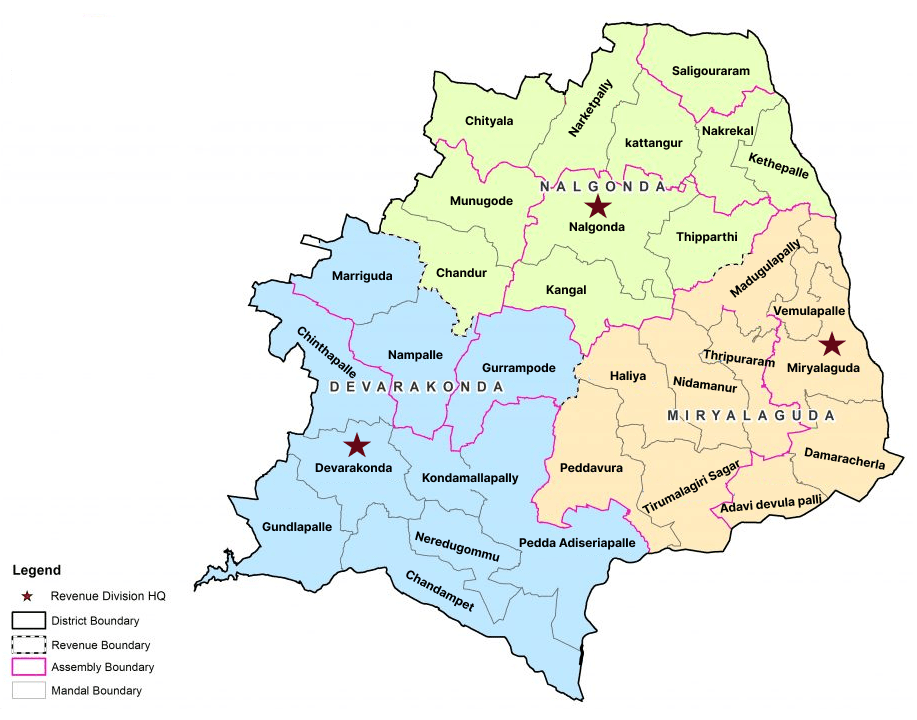
🕰️ Historic Sites
to Explore
Pachala Someswara Temple
A historic temple in Panagal town with a unique ground plan, intricate carvings, and an archaeological museum
Chaya Someswara Temple
A famous temple in Nalgonda district with three shrines dedicated to Shiva, Vishnu, and Surya
Chervugattu
Chervugattu, a village in Nalgonda, thrives on tourism, boasting the renowned Sri Parvathi Jadala Ramalingeswara Swamy temple and Kamineni medical institutions.
Devarakonda fort
The fort was constructed in the 13th – 14th century. The Devarakonda fort is the emblem of prosperity established by the kingdom of Padma Nayaka Veluma Rajas.
Nagarjuna Sagar Dam
While the dam is a modern engineering marvel, the surrounding area is of immense archaeological significance.
Kolanupaka Jain Temple
This ancient temple is a sacred site for Jain pilgrims and houses the idol of Lord Mahavira believed to be over 1,400 years old.
Bhongir Fort
Built on a single massive monolithic rock over 500 feet high, Bhongir Fort is a stunning architectural feat. With its egg-shaped structure
Latif Saheb Dargah
This revered Islamic shrine attracts devotees of all faiths. The annual Urs festival sees thousands of pilgrims visiting for spiritual blessings.
Yadagiri Gutta
Yadagirigutta is primarily famous for the Sri Lakshmi Narasimha Swamy Temple, a significant Hindu temple dedicated to Lord Narasimha, an incarnation of Lord Vishnu.
